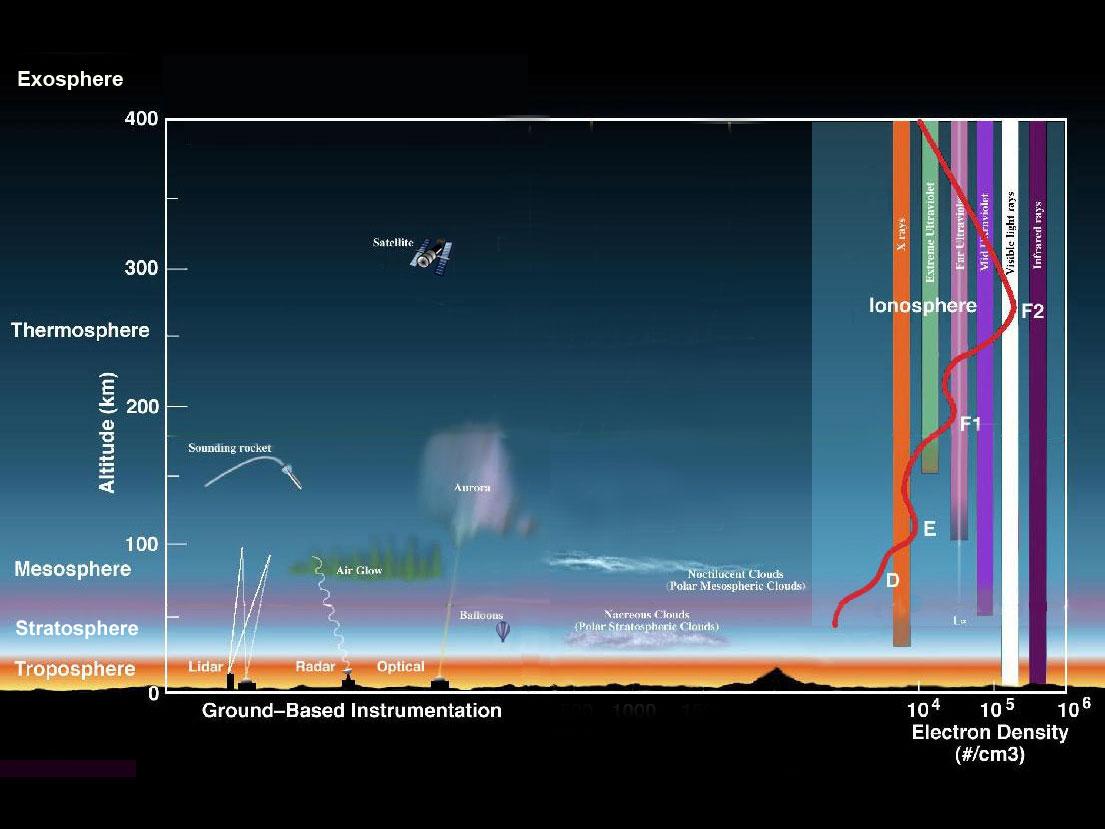Researchers have found a type of 'hot atomic' hydrogen atom in an upper layer of Earth's atmosphere - where our current understanding of physics says they shouldn't be able to exist.
The discovery could completely overhaul our understanding of how Earth's atmosphere works, including how hydrogen cycles around it, and how it protects our planet and technology from harsh space weather such as solar storms.
"Hot H atoms had been theorised to exist at very high altitudes, above several thousand kilometres, but our discovery that they exist as low as 250 kilometres [155 miles] was truly surprising," said lead researcher Lara Waldrop from the University of Illinois.
"This result suggests that current atmospheric models are missing some key physics that impacts many different studies, ranging from atmospheric escape to the thermal structure of the upper atmosphere."
Hot atoms are atoms with high amounts of translational energy, which means they're moving very fast. These are formed when a molecule adheres to a surface, releasing a hydrogen atom with high amounts of energy.
Because hydrogen atoms are so light, they can easily overcome a planet's gravitational pull and permanentaly escape into interplanetary space - in fact, that's how Mars ended up losing most of its water.
Based on that, researchers had long expected the presence of these hot atomic hydrogen atoms in the very top levels of the atmosphere.
But it wasn't thought they could exist in a level known as the thermosphere, which begins around 85 kilometres (53 miles) above the Earth's surface and stretches up to 500 kilometres (311 miles) above our planet, and houses many of our orbiting satellites.
 NASA
NASA
But that's what the researchers have now found, using the sensing abilities of NASA's Thermosphere Ionosphere Mesosphere Energetics and Dynamics (TIMED) satellite.
It's a big deal, because these hydrogen atoms play a crucial role in the physics governing Earth's upper atmosphere, and act as an important shield for our planet from solar flares. They also protect objects like satellites against the harsh space environment.
The team was able to figure out the amount of hydrogen atoms in the upper atmosphere, because atomic hydrogen scatters the Sun's ultraviolet radiation. By measuring the amount of this light that was being scattered using the TIMED satellite, the team was able to calculate the abundance and also spatial distribution of hydrogen.
But when the team first got their data, they couldn't make sense of what they were looking at, because hot hydrogen atoms were never supposed to be in the thermosphere.
"Classical assumptions about upper atmospheric physics didn't allow for the presence of hot H atoms at these heights," said one of the team members Jianqi Qin. "Once we changed our approach to avoid this unphysical assumption, we were able to correctly interpret the data for the first time."
With their new model, the researchers showed that the less solar activity there is, the more hot hydrogen atoms there are in the thermosphere - which will help us better understand how our atmosphere works in the future.
"Our analysis of the TIMED data led to the counter-intuitive finding that the temperature of the H atoms in the thermosphere increases significantly with declining solar activity, in contrast to the ambient atmospheric temperature, which decreases with declining solar activity," said Qin.
The team also found that the present of hot hydrogen atoms in the thermosphere significantly affects the distribution of regular hydrogen atoms throughout the rest of the atmosphere.
But the big question now is where these hot hydrogen atoms come from, which is still a mystery.
"We know that there must be a source of hot H atoms, either in the local thermosphere or in more distant layers of the atmosphere, but we do not have a solid answer yet," said Waldrop.
"We will definitely keep working on this puzzle, because knowledge about the H density distribution is critical to the investigation of our atmospheric system as well as its response to space weather, which affects many space-based technologies that are so important for our modern society," added Qin.
The research has been published in Nature Communications.
